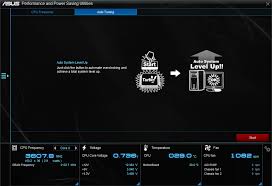
Deep learning frameworks can be used to train neural systems. These programs are often built on top of other frameworks, such as TensorFlow or Theano, and you can use them to create neural networks in a variety of ways. Keras is a good deep learning framework for beginners. It offers a simple command line interface, making it easy to build large models. It isn't as configurable as some of its competitors. It can also be accessed via an application programming interface (API).
TensorFlow
TensorFlow allows deep learning and machine learning. It works by breaking down data into operations and nodes, and then transforming them into graphs. These graphs may be input as variables or placeholders to the program. These nodes can be evaluated by TensorFlow Runtime.

Caffe
Caffe is a deep learning framework developed at the University of California, Berkeley. Open source, it's written in C++ and has a Python interface. It combines deep learning power with machine learning speed and simplicity.
MXNet
MXNet is an Open-Source Deep Learning Framework that can be used for training deep neural networks. It supports multiple programming languages and is flexible and scalable.
Chainer
Chainer is a Python deep learning framework. It uses Numpy and CuPy Python libraries and offers a number of extension libraries. It supports multiple network architectures, including per–batch and forward computation. It also supports Python control flow statements and backpropagation. Chainer allows developers to create and debug complex networks quickly.

Sonnet
Sonnet is a deep learning framework that is built on the Deepmind library and is based on Tensorflow 2.0. Although it shares many similarities with TensorFlow and other deep learning libraries, Sonnet is unique in that it offers specific features to meet research needs. We'll be discussing these features and what makes Sonnet special in this article.
FAQ
How does AI impact the workplace
It will transform the way that we work. We will be able automate repetitive jobs, allowing employees to focus on higher-value tasks.
It will enhance customer service and allow businesses to offer better products or services.
It will allow us future trends to be predicted and offer opportunities.
It will help organizations gain a competitive edge against their competitors.
Companies that fail AI will suffer.
How will governments regulate AI
The government is already trying to regulate AI but it needs to be done better. They must ensure that individuals have control over how their data is used. And they need to ensure that companies don't abuse this power by using AI for unethical purposes.
They also need ensure that we aren’t creating an unfair environment for different types and businesses. Small business owners who want to use AI for their business should be allowed to do this without restrictions from large companies.
Who are the leaders in today's AI market?
Artificial Intelligence (AI), is a field of computer science that seeks to create intelligent machines capable in performing tasks that would normally require human intelligence. These include speech recognition, translations, visual perception, reasoning and learning.
There are many types of artificial intelligence technologies available today, including machine learning and neural networks, expert system, evolutionary computing and genetic algorithms, as well as rule-based systems and case-based reasoning. Knowledge representation and ontology engineering are also included.
It has been argued that AI cannot ever fully understand the thoughts of humans. Deep learning has made it possible for programs to perform certain tasks well, thanks to recent advances.
Google's DeepMind unit, one of the largest developers of AI software in the world, is today. Demis Hassabis was the former head of neuroscience at University College London. It was established in 2010. DeepMind developed AlphaGo in 2014 to allow professional players to play Go.
What does AI look like today?
Artificial intelligence (AI) is an umbrella term for machine learning, natural language processing, robotics, autonomous agents, neural networks, expert systems, etc. It's also known by the term smart machines.
Alan Turing wrote the first computer programs in 1950. He was curious about whether computers could think. In his paper, Computing Machinery and Intelligence, he suggested a test for artificial Intelligence. The test seeks to determine if a computer programme can communicate with a human.
John McCarthy introduced artificial intelligence in 1956 and created the term "artificial Intelligence" through his article "Artificial Intelligence".
Today we have many different types of AI-based technologies. Some are simple and easy to use, while others are much harder to implement. They can be voice recognition software or self-driving car.
There are two types of AI, rule-based or statistical. Rule-based uses logic to make decisions. An example of this is a bank account balance. It would be calculated according to rules like: $10 minimum withdraw $5. Otherwise, deposit $1. Statistics are used to make decisions. A weather forecast may look at historical data in order predict the future.
Which are some examples for AI applications?
AI can be applied in many areas such as finance, healthcare manufacturing, transportation, energy and education. These are just a handful of examples.
-
Finance – AI is already helping banks detect fraud. AI can detect suspicious activity in millions of transactions each day by scanning them.
-
Healthcare - AI is used to diagnose diseases, spot cancerous cells, and recommend treatments.
-
Manufacturing – Artificial Intelligence is used in factories for efficiency improvements and cost reductions.
-
Transportation - Self-driving cars have been tested successfully in California. They are currently being tested all over the world.
-
Utilities are using AI to monitor power consumption patterns.
-
Education – AI is being used to educate. Students can interact with robots by using their smartphones.
-
Government - Artificial Intelligence is used by governments to track criminals and terrorists as well as missing persons.
-
Law Enforcement - AI is used in police investigations. Search databases that contain thousands of hours worth of CCTV footage can be searched by detectives.
-
Defense - AI is being used both offensively and defensively. Offensively, AI systems can be used to hack into enemy computers. Protect military bases from cyber attacks with AI.
Statistics
- A 2021 Pew Research survey revealed that 37 percent of respondents who are more concerned than excited about AI had concerns including job loss, privacy, and AI's potential to “surpass human skills.” (builtin.com)
- While all of it is still what seems like a far way off, the future of this technology presents a Catch-22, able to solve the world's problems and likely to power all the A.I. systems on earth, but also incredibly dangerous in the wrong hands. (forbes.com)
- According to the company's website, more than 800 financial firms use AlphaSense, including some Fortune 500 corporations. (builtin.com)
- By using BrainBox AI, commercial buildings can reduce total energy costs by 25% and improves occupant comfort by 60%. (analyticsinsight.net)
- In 2019, AI adoption among large companies increased by 47% compared to 2018, according to the latest Artificial IntelligenceIndex report. (marsner.com)
External Links
How To
How to make an AI program simple
It is necessary to learn how to code to create simple AI programs. Many programming languages are available, but we recommend Python because it's easy to understand, and there are many free online resources like YouTube videos and courses.
Here's a brief tutorial on how you can set up a simple project called "Hello World".
First, open a new document. This can be done using Ctrl+N (Windows) or Command+N (Macs).
Next, type hello world into this box. Enter to save the file.
Press F5 to launch the program.
The program should display Hello World!
This is just the start. These tutorials will help you create a more complex program.